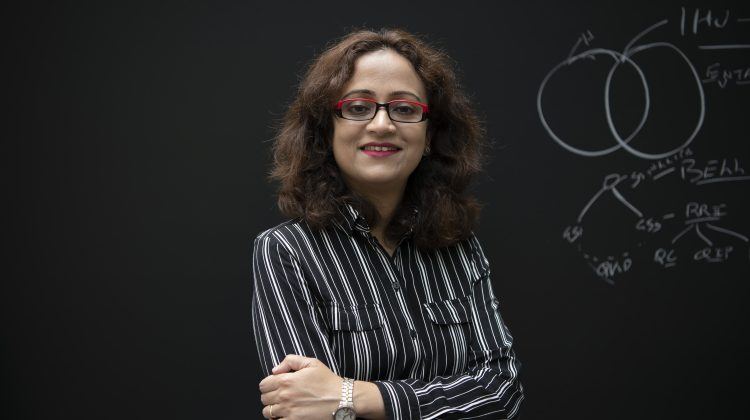Beautiful entanglement: The quantum symphony
An orchestral concert is an unlikely setting for a lesson in quantum mechanics. All the more reason to do it.
“There is always something going on just beyond our expectations,” says the narrator of Quantum: Music at the Frontier of Science, her voice accompanied by the orchestra playing Mozart’s Symphony No. 29.
Onstage at the National Arts Centre in Ottawa, members of the Kitchener-Waterloo Symphony begin to experiment with the Mozart piece by interjecting peculiar tones from a John Cage composition – particles of sound randomly generating and annihilating amid the melody.
“The trick,” continues the narrator, “is to never stop looking deeper.”
The Mozart-Cage mash-up is the final piece in a concert that, over the preceding 90 minutes, has taken the audience on an unusual journey through the parallel histories of quantum science and 20th century music.
The compositions of Anton Webern and Iannis Xenakis performed earlier in the concert served as aural illustrations of concepts including quantum entanglement, superposition, and the uncertainty principle.
The concert is, as KW Symphony Music Director Edwin Outwater says at the outset, “a gateway to a strange new world of music and quantum science.”
It’s a challenging concert for the audience – quantum science is not easy to comprehend, nor are the dissonant compositions of Xenakis and Cage. But the narrator, longtime Stratford actor Ann Baggley, acts as a comforting tour guide through the concert’s many unexpected turns.
This performance was the fifth staging of the concert since its creation in 2012 as a collaboration between the Kitchener-Waterloo Symphony and the Institute for Quantum Computing at the University of Waterloo (IQC).
The concert was conceived and co-written by Outwater and Colin Hunter, a senior science writer at Perimeter who previously worked at IQC, in an attempt to bridge the perceived divide between science and the arts. It was created with input from a committee of quantum physicists including founding Perimeter researcher and IQC Director Raymond Laflamme, who explains quantum concepts onstage during spoken interludes in the concert.
Launched as part of the KW Symphony’s “Intersections” Series – which pairs orchestral music with unexpected genres, from heavy metal to circus arts to quantum mechanics – the concert has since been performed at the grand opening of the University of Waterloo’s Mike & Ophelia Lazaridis Quantum-Nano Centre in 2012, as well as by the Indianapolis Symphony Orchestra.
The KW Symphony will perform the concert again on September 17, this time at Kitchener’s Conrad Centre for the Performing Arts, as part of the Waterloo Innovation Summit.
“This concert has been a very cool experiment,” says Outwater, “and I’m always amazed by the results.”





















































































